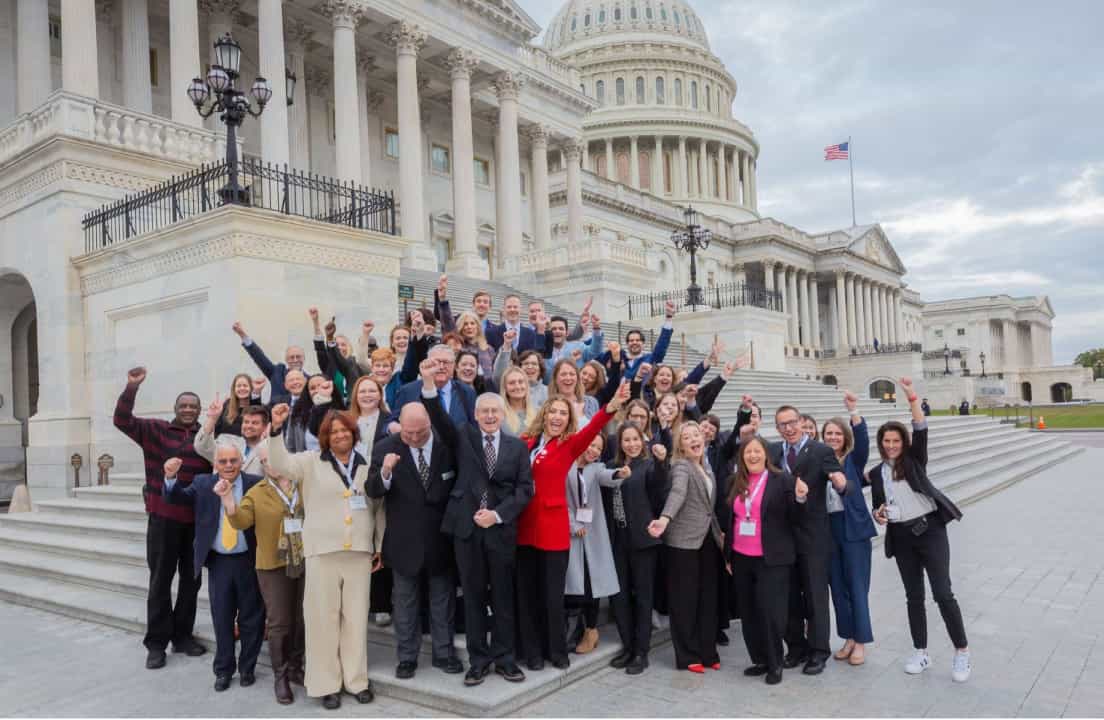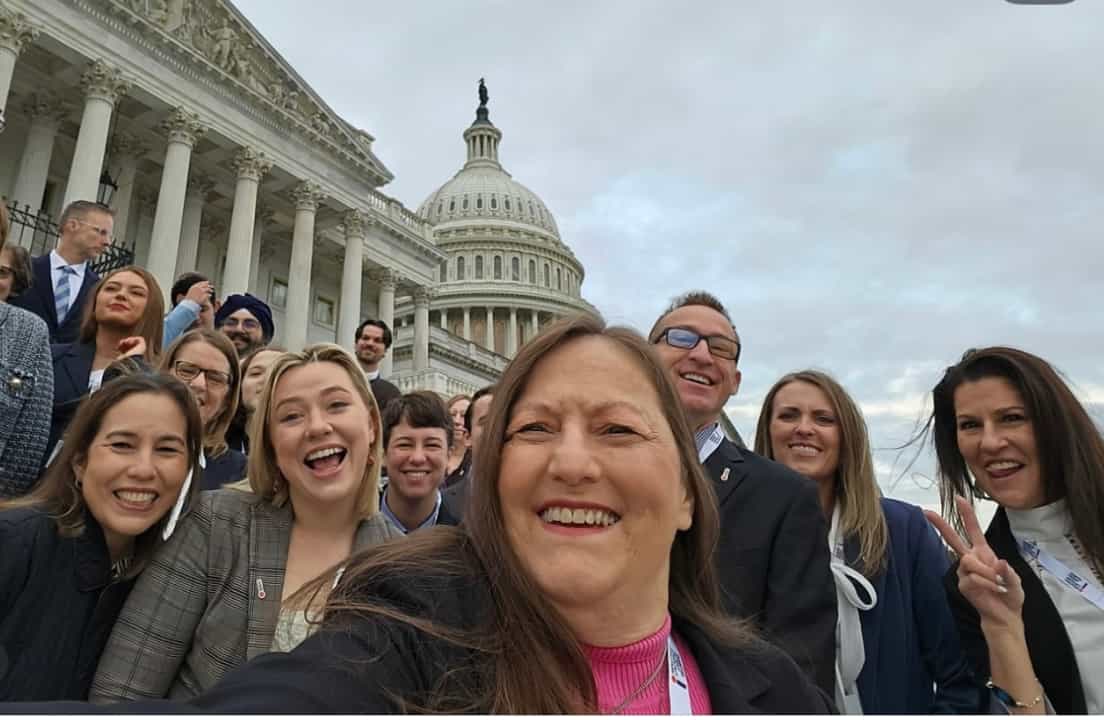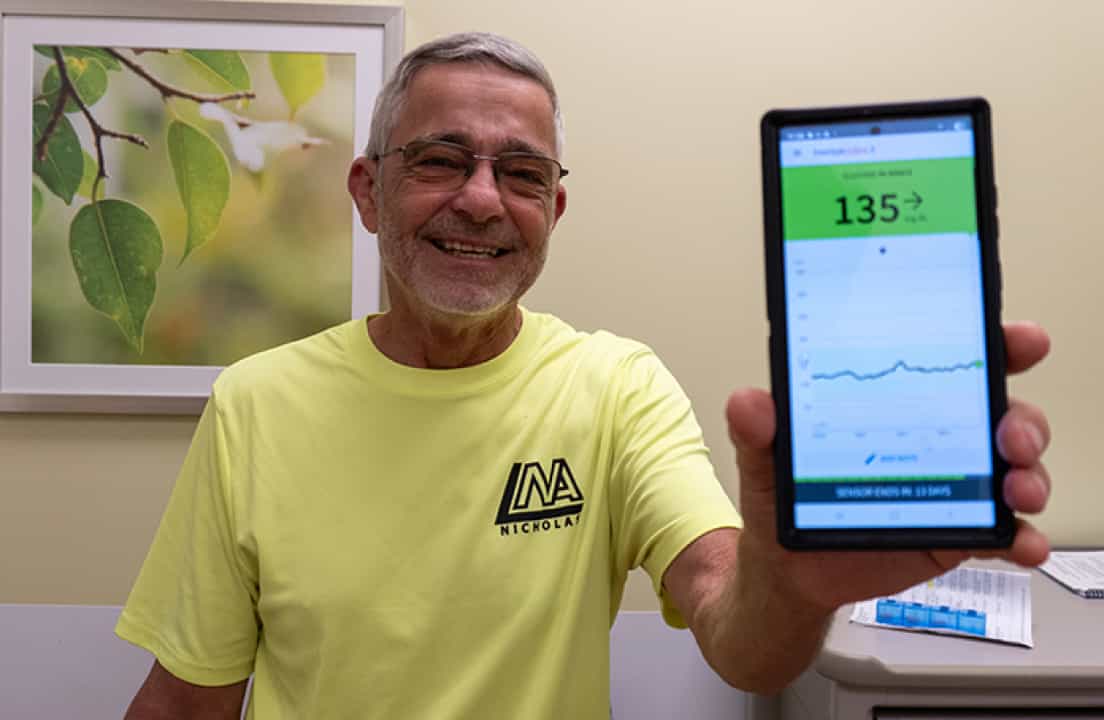T1D Guide
T1D Strong News
Personal Stories
Resources
T1D Misdiagnosis
T1D Early Detection
Research/Clinical Trials
Type 1 Diabetes Advocacy: From Lived Experience To Legislation on Capitol Hill
52 advocates from across the United States gathered on Capitol Hill on October 29, 2025, united by one mission — to make life better for people living with diabetes. Organized by the Diabetes Patient Advocacy Coalition (DPAC), the day brought doctors, educators, and people impacted by diabetes face-to-face with lawmakers.

For me, a person living with type 1 diabetes (T1D) for almost 45 years, it was my first time walking the halls of Congress — exhausting, powerful, and deeply inspiring.
Arriving in Washington, DC
When I landed in Washington, DC, after a long flight from California, I knew it would be a fast-paced few days. DPAC organized a full-day training session and a dinner for advocates from around the country on October 28. The following morning, October 29, we headed to Capitol Hill to share our stories with members of Congress and their staff.
This was my first time attending Hill Day in person. I had taken part virtually before, but being there was ten times more powerful.
.jpg)
You could feel the energy the moment you entered the Senate and House buildings. Every hallway echoed with voices, footsteps, and determination.
That same excitement filled our training day. Many of us were meeting in person for the first time, even though we had connected for months — and for some, years — through DPAC meetings and social media. The room buzzed with excitement and purpose.
We instantly felt a bond — united by one goal: to make sure the voices of people living with diabetes were heard on Capitol Hill.
Who Is DPAC?
The DPAC is a national, nonpartisan organization that amplifies patients' voices in policy decisions. Founded and led by people living with diabetes, DPAC empowers advocates across all 50 states to take action on issues that affect access, affordability, and equity in diabetes care.
Through training, education, and direct engagement with lawmakers, DPAC ensures that the experiences of people living with diabetes are represented where decisions are made — from state legislatures to Capitol Hill.
Traveling With Type 1 Diabetes
Traveling with type 1 diabetes always requires extra planning. My carry-on bag was filled with glucose tablets, protein bars, infusion sets, sensors, and extra insulin. Changing time zones can send blood sugar levels in unpredictable directions, and adrenaline from travel often pushes numbers higher before fatigue and missed meals bring them crashing down.
According to the Centers for Disease Control and Prevention, stress, physical activity, and delayed meals can all affect blood glucose levels. That’s exactly what happened to me. Between the early mornings, the fast-paced walking from meeting to meeting, and no time to eat between appointments, I had several tough low blood sugars during the day.
My continuous glucose monitor (CGM) alarmed twice during congressional meetings. It might sound stressful, but it turned into a powerful example of what we live with every day. I was actually glad they saw it — and heard it.
It showed exactly how unpredictable and constant diabetes can be, even when you’re as prepared as possible.
All of us came ready with snacks, glucose, and supplies, but with back-to-back meetings and tight schedules, there simply wasn’t time to stop. It was the perfect, unplanned lesson in what life with diabetes really looks like.
Inside Hill Day With DPAC
By the time we reached Capitol Hill, the enthusiasm from training day had transformed into pure momentum. Our teams represented every corner of the country and every part of the diabetes community — doctors, CDCESs, parents, pharmacists, and people living with type 1 and type 2 diabetes. We also stood alongside representatives from partner organizations that support and amplify DPAC’s mission. Together, we spoke with lawmakers and their staff about urgent issues shaping the future of diabetes care.
Standing together with other diabetes organizations gave our voices more strength. When we show lawmakers that patients and groups are united, it’s powerful — proof that we’re all fighting for the same goal.
“It was really great having eight diabetes organizations join us for a Diabetes Community Hill Day last week!” said George Huntley, chief executive officer of both the Diabetes Leadership Council (DLC) and DPAC. “It is critically important for legislators to hear the patient and caregiver voices about the importance of affordable care for people living with diabetes. Advocacy is an essential tool to facilitate meaningful change.”

Huntley also leads the Diabetes Leadership Council (DLC), DPAC’s affiliate organization. The two nonprofits work together to strengthen diabetes policy from every angle — DLC focuses on research and education, while DPAC mobilizes patient advocates to drive real-world change.
Each team had a packed schedule of meetings across congressional offices — walking miles between appointments and staying sharp through a fast-paced day. Even though the government had shut down, the staffers were there, ready, and expecting us.
The government can shut down, but diabetes doesn’t.
That’s why we were there — to remind policymakers that the needs of people living with diabetes continue no matter what’s happening in Washington.

Advocacy in Action
With our training behind us, it was time to put advocacy into action. The top issue on our agenda was a proposal by the Centers for Medicare & Medicaid Services (CMS) to reclassify continuous glucose monitors (CGMs) and insulin pumps as rental devices under a new competitive bidding program. A decision was expected soon, and if finalized, it could severely disrupt access to these life-sustaining technologies.
The change would reduce suppliers, add red tape, and force people living with diabetes to return devices they already rely on. We asked lawmakers to urge CMS not to move forward with the rule and instead update outdated coverage policies to improve access for Medicare beneficiaries.
We also asked Congress to support several bipartisan bills designed to make diabetes care more affordable and accessible:
- Treat and Reduce Obesity Act (TROA): Would allow Medicare to cover obesity medications and nutritional counseling, helping prevent diabetes and related conditions.
- Pharmacy Benefit Manager (PBM) Reform Bills: Would bring greater transparency to prescription-drug pricing and ensure negotiated discounts actually reach patients at the pharmacy counter.
- Expanding Access to Diabetes Self-Management Training Act: Would make diabetes education easier to access and more affordable, especially for older adults on Medicare.
- Type 1 Diabetes Screening and Early Detection: Support for programs that expand awareness and early diagnosis to delay or prevent complications.
- Reauthorization of the Special Diabetes Program (SDP): A key initiative funding research and innovation in diabetes prevention and treatment nationwide.
“These are not partisan issues — they’re people issues,” said Huntley. “It makes fiscal sense, medical sense, and moral sense. A healthier society benefits everyone.”
These policies may sound complex, but they all share one goal: to make diabetes care more affordable, fair, and equitable. Every advocate’s story helped lawmakers understand how these issues play out in real life — and why they matter so deeply.
The Human Side of Advocacy
For me, those words came to life on Capitol Hill. This experience was unlike anything I had done before. The early mornings, the adrenaline, and even the low blood sugars couldn’t overshadow how empowering it felt to stand beside others who share this journey — all united by one purpose: to improve the lives of people living with diabetes.
Between meetings, we shared stories, traded glucose tablets, and laughed about our tired feet and lack of sleep. There was an undeniable sense of connection.

What stood out most wasn’t just the policy — it was the people. The advocates who flew from every corner of the country, the staffers who listened with empathy, and the bonds that formed instantly between those of us who live this reality every day. Advocacy can be demanding, but it’s also deeply human.
Reflection and Why It Matters
After our final meetings, DPAC hosted a wrap-up reception at the hotel. I was running on fumes, but didn’t want to miss it. The conversations that evening were filled with relief, connection, and gratitude. We reflected on how far we’ve come — and how much more there is to do.
We celebrated together, sharing both the highs and lows of our day on the Hill. There was plenty of laughter, storytelling, and picture-taking — everyone posing for silly photos, cocktails in hand. It was over, and we were all worn out, but in great spirits. New friendships had formed, and it felt like we were celebrating something much bigger than ourselves — a collective accomplishment that truly mattered.
The next morning, we all headed out at different times, homebound for cities across the United States, carrying a deep sense of pride and accomplishment. The government had shut down, yet our message remained the same: diabetes doesn’t pause — and neither can we. That’s why advocacy matters.

Participating in Hill Day reminded me that change doesn’t happen overnight. It takes persistence, teamwork, and a willingness to share personal stories — even the hard parts. This work is a long-term process, a huge commitment, and hard work, but it’s also incredibly rewarding.
Every meeting, every story, and every voice matters.
After more than four decades living with type 1 diabetes, I know that progress happens when patients stay at the table — and keep speaking up. I left Washington tired but inspired, reminded that the most powerful advocacy comes from those living it every day. We are the experts in our own condition, and our stories are what move policy from paper to progress.
For anyone considering getting involved, visit diabetespac.org or diabetesleadership.org to learn more. Advocacy isn’t just about legislation — it’s about people. It’s about all of us.


.jpeg)





.webp)


.jpg)


.webp)
.jpg)
.jpg)


.jpg)


.jpg)

.jpg)

.jpg)





.jpg)
.jpg)
.jpg)
.jpg)




.jpg)

.jpg)
.jpg)
.jpg)
.jpg)
.jpg)



.jpg)

.jpg)
.jpg)
.jpg)
.jpg)
.jpg)
.jpg)
.jpg)
.jpg)

.jpg)
.jpg)
.jpg)
.jpg)
.jpg)

.jpg)
.jpg)
.jpg)


.jpg)

.jpg)
.jpg)
.jpg)
.jpg)
.jpg)

.jpg)
.jpg)



.jpg)
.jpg)
.jpg)

.jpg)
.jpg)





















.jpg)








.webp)